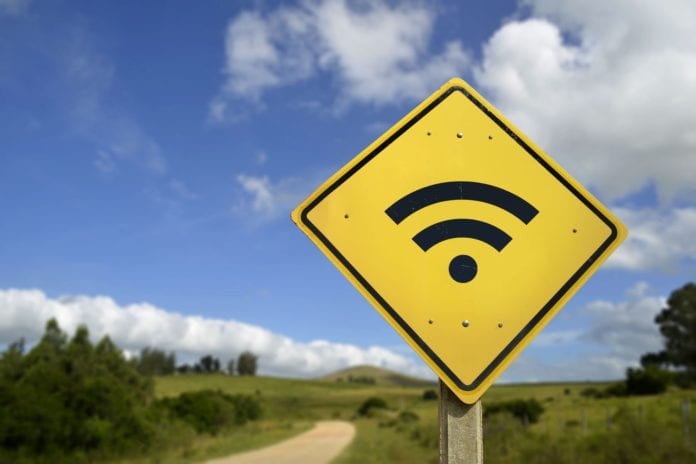Artificial intelligence, or AI for short, has been described variously as a threat to humanity, a boon to economies, and many other things in between. All valuable technologies solve a pertinent problem. Until recently AI and its favorite children, machine learning and predictive analytics, have had little impact on the world outside of academia and science-fiction. Now, AI is poised to help transform the processes and cost base of commercial organizations, and to change the way people interact with one another and the world.
For AI applied to Wi-Fi promises to solve a significant problem which is the cost of troubleshooting the many potential connection problems that can occur from many possible sources. From RF interference, to DHCP to DNS issues, operators and IT staff challenge is to constantly monitor and identify the real source of the problem. It could be they are looking at a layer 2 issue when in fact it is a networking problem. And of course, there are all the costs associated to troubleshooting and support calls and associated downtime for enterprises, consumers and the service providers themselves.
How big is the problem?
According to Mojo Networks, which promotes the concept of “Cognitive Wi-Fi”, research has determined that one in 10 enterprise network users experience Wi-Fi downtime at least once/week, which adds up to cost $2 million/year for a typical 10,000-employee company. Network admins spend 50% of their time troubleshooting and resolving user-reported “Wi-Fi issues.” KodaCloud seems to believe there is a strong business case and demand for proactively managing and troubleshooting Wi-Fi networks for its clients and calls it “AI-Powered Wi-Fi as a Service for distributed Enterprises, Service Providers & Hotels”.
KodaCloud for example says that an average of 30 minutes to troubleshoot and another 30 minutes are required to fix wireless problems. On top of that, most enterprises reside in changing RF environment with new devices, interferers, and neighbor networks. Firmware/OS upgrades can fundamentally change the device/network behavior with significant difference between clients (iPhone, MacBook, Android, etc.)
The case for AI in networking
RRM, client steering, roaming optimization, QoS, etc. require hundreds, of parameters to adjust for optimal performance. It is simply not humanly possible to monitor and adjust these parameters in a dynamic environment hence the need for machine learning and resolution.
The idea behind AI applied to Wi-Fi is to implement an automated management system able to monitor the network, recognize normal operations, analyze deviations from this normal operations in real time, and apply suitable solutions. Sort of a real-time self-healing system. However, things are not so simple: data flows in a Wi-Fi network are huge in number and variety, making simple performance averaging approaches ineffective.
Artificial intelligence would allow the key characteristics of problems in the Wi-Fi network to be picked out from the big data that is the mass of traffic data, fix known problems directly, analyze trends in performance, and predict future requirements to avoid problems altogether in the future. In addition, machine learning, AI enables computing devices to learn as they receive new data with no need to be reprogrammed. This would allow the Wi-Fi network management system to constantly add to its knowledge base, extend its repertoire of known problems and solutions, and raise standards of user experience even higher. Self-learning in essence.
How will it work?
In general, the main three steps include:
- Sense. AI systems can dynamically analyze MAC frames and IP packets at any layer and provide a thorough view of the network performance. Identify root cause of issues, at the exact time and location in the network as well as compare with service level agreements. What % of users are affected? Which APs, WLANs, and users were most affected? Which are the most impactful issues identified for prioritization?
- Understand. Is it a layer 2 issue? A 4-way handshake problem or a networking issue?
- Act. Linked to other software, electronic, and physical systems, AI can then make any number of things happen, from quarantining suspect data packets in a network to “autonomically” auto-correct the issue.
The intelligence and algorithms sit both at the edge on the access point or next to the controller, as well as in the cloud in the case where the management plane is on the cloud as is the case with Mojo Networks for example while control and data plane reside still at the AP. Company Mist proposes Wi-Fi assurance through its “Intelligent Wireless Cloud” with a combination of intelligent(stand-alone) access points managed from the cloud and adds its own flavor of virtual BLEs to the mix.
Company Nyansa proposes a holistic view of network performance and uses what is calls a “Crawler” in the core network to capture the data. The Voyance crawler intercepts all data through a span port on network switch(es) and receives Wi-Fi data from the controller. It then processes the data and sends low bit rate metrics to the cloud. What is interesting in Nyansa approach is that it determines industry benchmark/baseline so enterprises IT staff can compare their network performance with their peers in the industry.
Expected results
All this emerging technology promises many benefits more or less quantifiable. Benefits range from less downturn time to better customer satisfaction because of better quality of experience. KodaCloud claims AI system can proactively correct 80% of network and connectivity issues. Exact numbers will vary from enterprise to enterprise, from industry to industry and from level of complexity of the network.
Essentially, AI must be fueled by two things to accomplish these feats: computing power and data, both of which are now often available in abundance, thanks to the cloud and the collection and storage of big data. This combination of machine learning and big data must be easy to deploy, easy to use and easy to scale. We expect that as AI matures it will be implemented in residential homespots as well with the promise of huge savings for Wi-Fi service providers.

